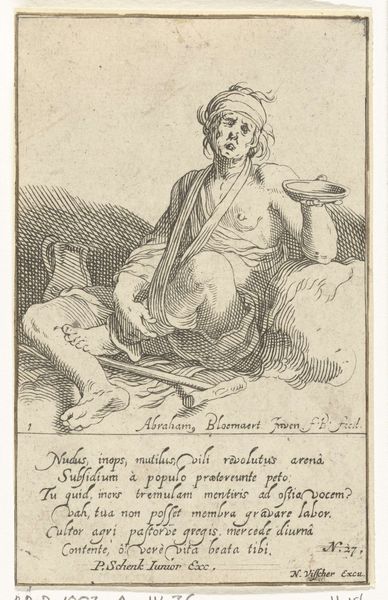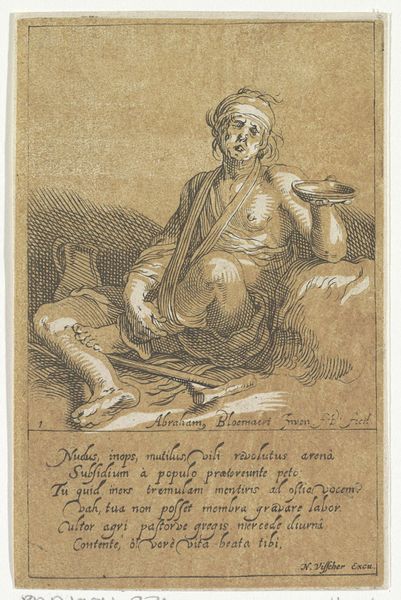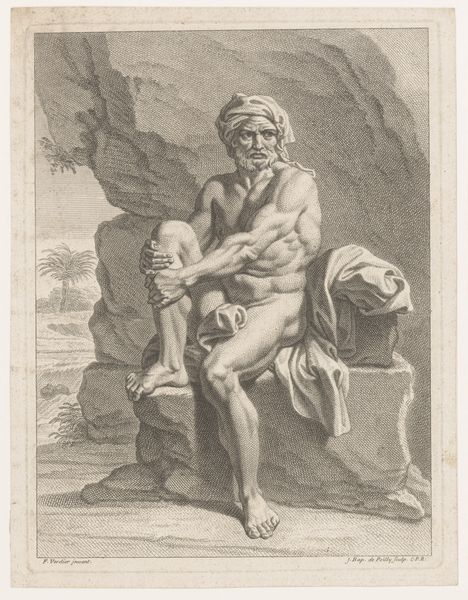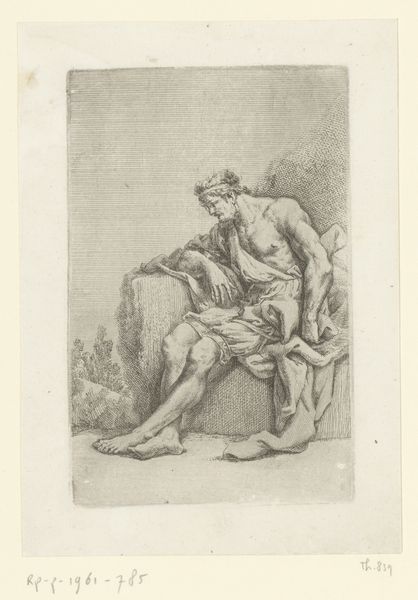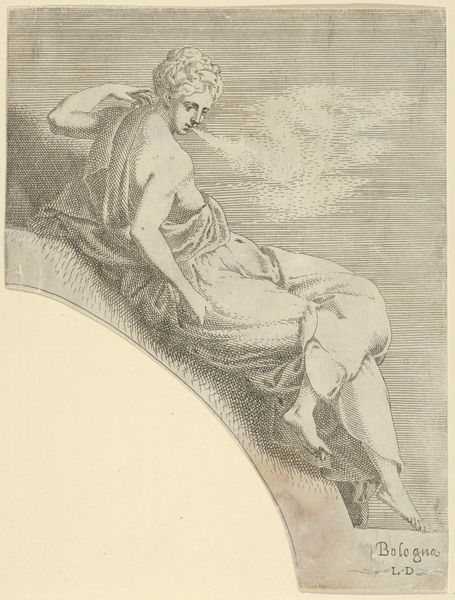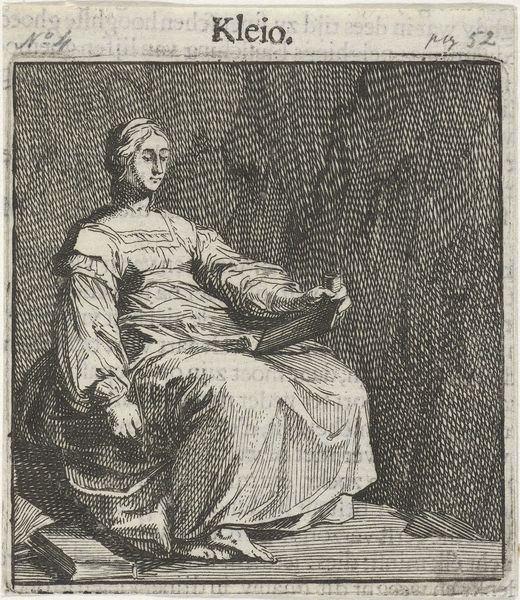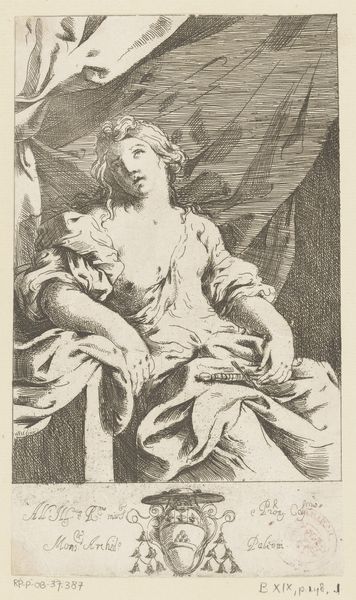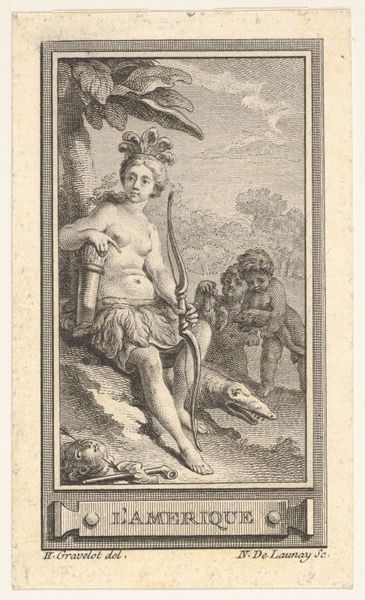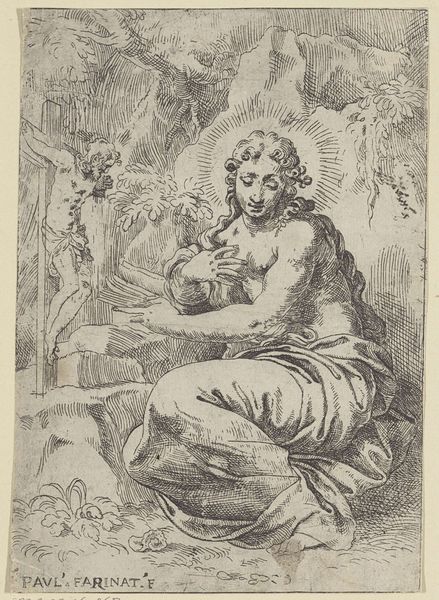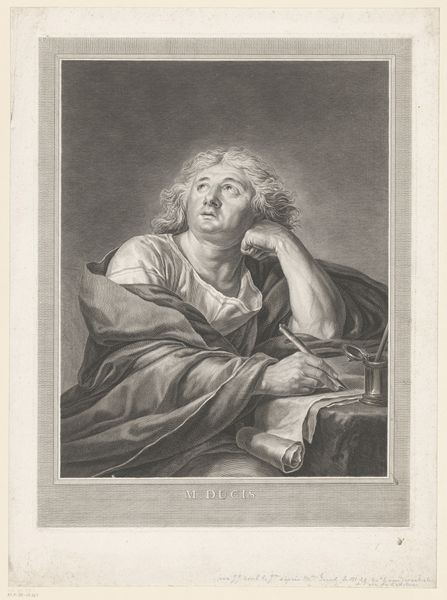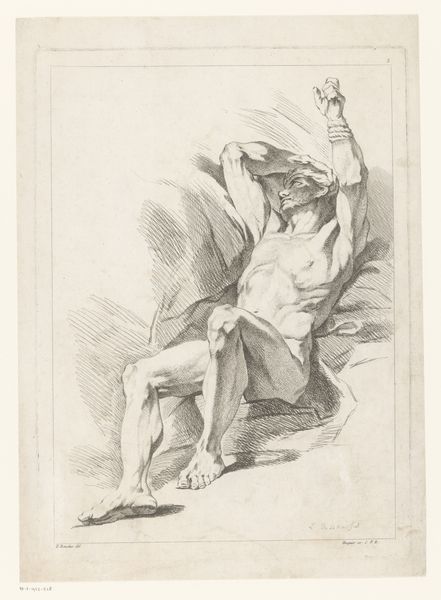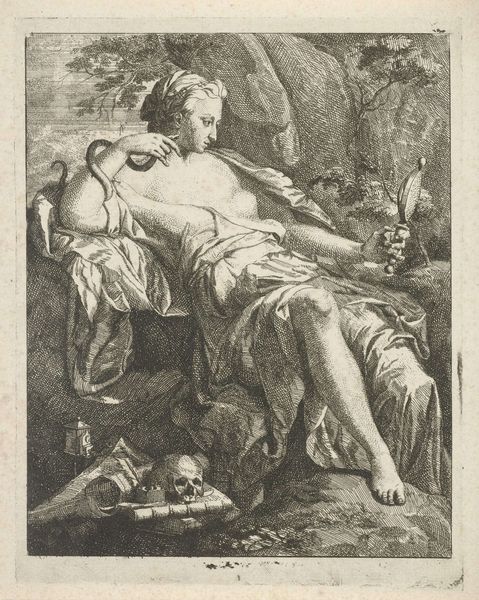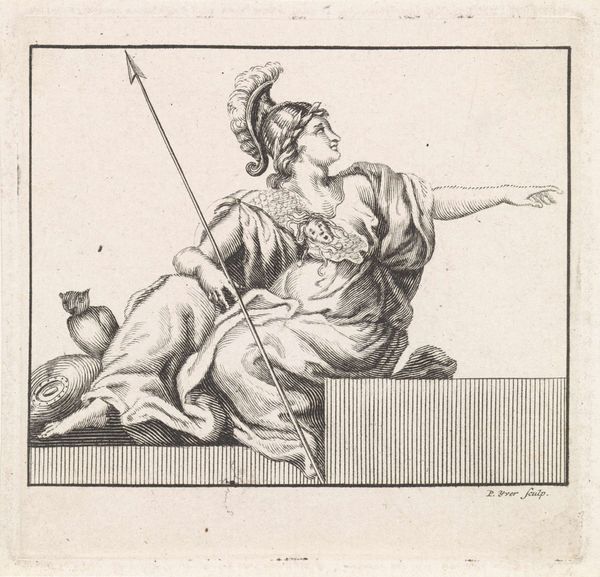
drawing, pen, engraving
#
drawing
#
comic strip sketch
#
baroque
#
pen illustration
#
pen sketch
#
figuration
#
personal sketchbook
#
sketchwork
#
pen-ink sketch
#
pen work
#
sketchbook drawing
#
pen
#
genre-painting
#
storyboard and sketchbook work
#
sketchbook art
#
engraving
Dimensions: height 127 mm, width 82 mm
Copyright: Rijks Museum: Open Domain
Curator: Let’s consider this engraving currently held at the Rijksmuseum, titled "Zittende bedelaar met zijn been in een mitella" which translates to “Sitting Beggar with his leg in a sling,” made after 1635. Frederick Bloemaert created this work, part of a series focusing on everyday life. Editor: The stark, etched lines give it a kind of rough-hewn honesty, don’t you think? There’s a rawness to the depiction of the beggar’s exposed limbs and simple clothing. It immediately makes you wonder about the kind of life this person would have led and what sort of labor would lead to such damage. Curator: It's interesting to think about the position of such imagery. The piece belongs to a broader artistic trend where genre scenes offered social commentary. It suggests that Bloemaert—or his circle—engaged with the social realities of the time. This aligns with a growing awareness among artists regarding the lower social classes. Editor: Exactly. The medium—engraving—allows for multiples, creating a potential market for these kinds of images, perhaps beyond the traditionally wealthy patrons. Consider the economics of producing and distributing such an image: it opens up questions of who could afford it and what they were looking for when buying something like this. Curator: Yes, the affordability definitely broadened the audience. The printing press democratizes imagery and influences the distribution and consumption of visual culture. I suppose people found some degree of interest or perhaps even a warning in images of poverty. These works raise crucial questions regarding art's societal role. Editor: And the craft! The engraver, presumably working from Bloemaert’s original design, is making decisions about line weight, texture. What labor did it entail to mass-produce imagery such as this, and to whose benefit? Curator: Looking at it that way gives this piece another level of richness. Thinking about distribution as labor offers a necessary counterpoint to formal analyses of line and form. Editor: I appreciate that shift of focus. It's a good reminder of the art world's often invisible, material underpinnings. Curator: Agreed. It’s a viewpoint that allows a broader view of art history.
Comments
No comments
Be the first to comment and join the conversation on the ultimate creative platform.
